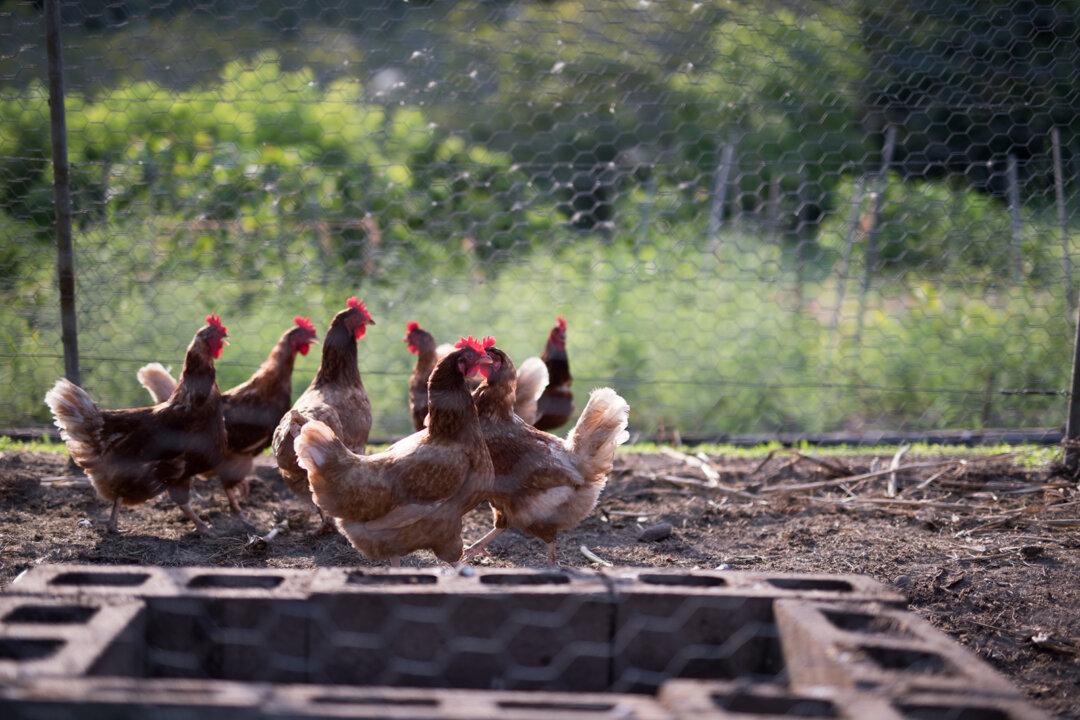Minneapolis—Only once did the chickens fly—or fence-hop—into Nancy Engberg’s neighbor’s yard in north Minneapolis.
And no, it wasn’t just to cross the road to get to the other side.
“I watched them go over,” Engberg said, describing a mildly alarming incident early in her tenure tending to an urban coop. “Otherwise, they were pretty happy at home.”
But other tasks awaited Engberg when she purchased her backyard flock of hens more than a decade ago. Even today—after national egg prices soared in December to more than $4 a dozen, prompting more people to consider becoming poulterers—Engberg warns it’s not for the casually interested. It’s not just a matter of throwing up a coop and purchasing chicks from Fleet Farm to source DIY eggs, the experienced flock owner said.
“This really is a hobby for animal lovers,” said Engberg, who works for Minneapolis Animal Care and Control by day. “Feed costs money. The initial outlay for the coop and things ... it’s not easy.”
But that doesn’t mean you shouldn’t do it, so long as you’re prepared to stick out this journey into aviculture. Here are some tips to help your flock take flight.
Set Your Eggs-pectations
The backyard chicken renaissance lifted off the ground—awkwardly, slightly, like a prairie chicken flapping into a tree—during the early days of the pandemic. Food supply lines tapered to a trickle. Anxieties abounded about the origin of meat to milk to eggs. In response, communities in Minnesota adopted backyard-flock-friendly ordinances.
Hopkins passed an ordinance—after initial rebuffing—in August 2020. International Falls voted down an ordinance. Mankato is still mulling one. But Thief River Falls, in the heart of the commercial turkey belt, asks for just $25, viewing an educational video, and passing a University of Minnesota-administered test.
The work has rousted Abby Schuft, a poultry educator with University of Minnesota Extension. In addition to working with the commercial industry, Schuft educates would-be buyers about the logistics of owning a backyard flock.
This often involves dampening expectations.
“If you don’t take care of your dog and do the minimum maintenance, like a rabies shot or a kennel cough vaccine, there’s going to be a risk,” Schuft said. “It’s the same with birds.”
Would-be bird owners might dream of waking to roosters and gathering golden-brown eggs with orange yokes. But Schuft said to buttress such aspirations against reality. In Minnesota, those birds need warmth much of the year. And roosters? Many cities don’t even allow them. (Minneapolis actually does, but you'll need written consent from at least 80 percent of your neighbors within 100 feet your property, since the cockerel might subject them to some sunrise cock-a-doodle-doos.)
Most importantly, Schuft said, backyard birds deserve freedom from hunger, thirst, discomfort, injury, disease, and distress. Flock-minders should also allow birds to express normal behaviors.
But there are concerns for the bird-owner, too.






